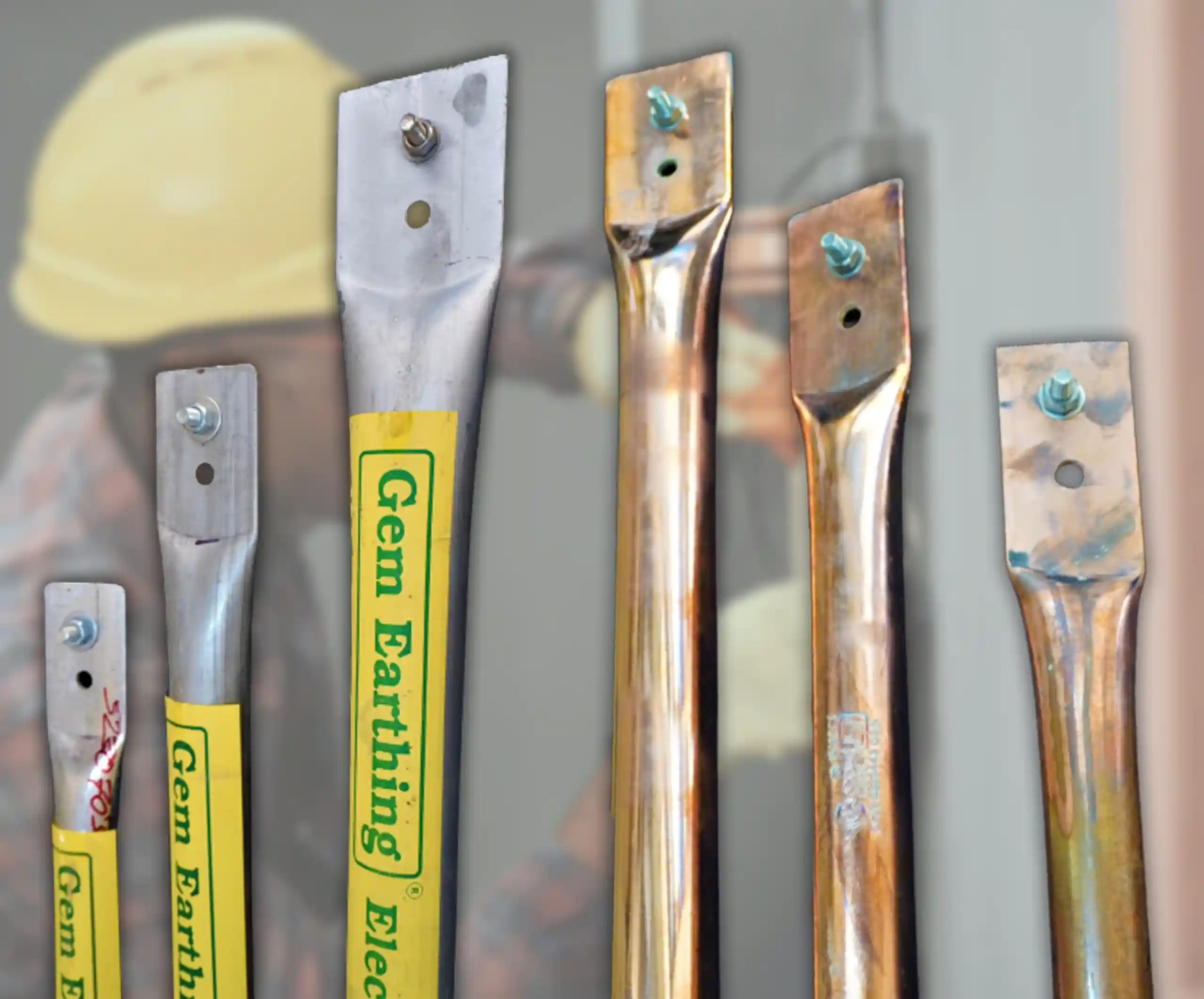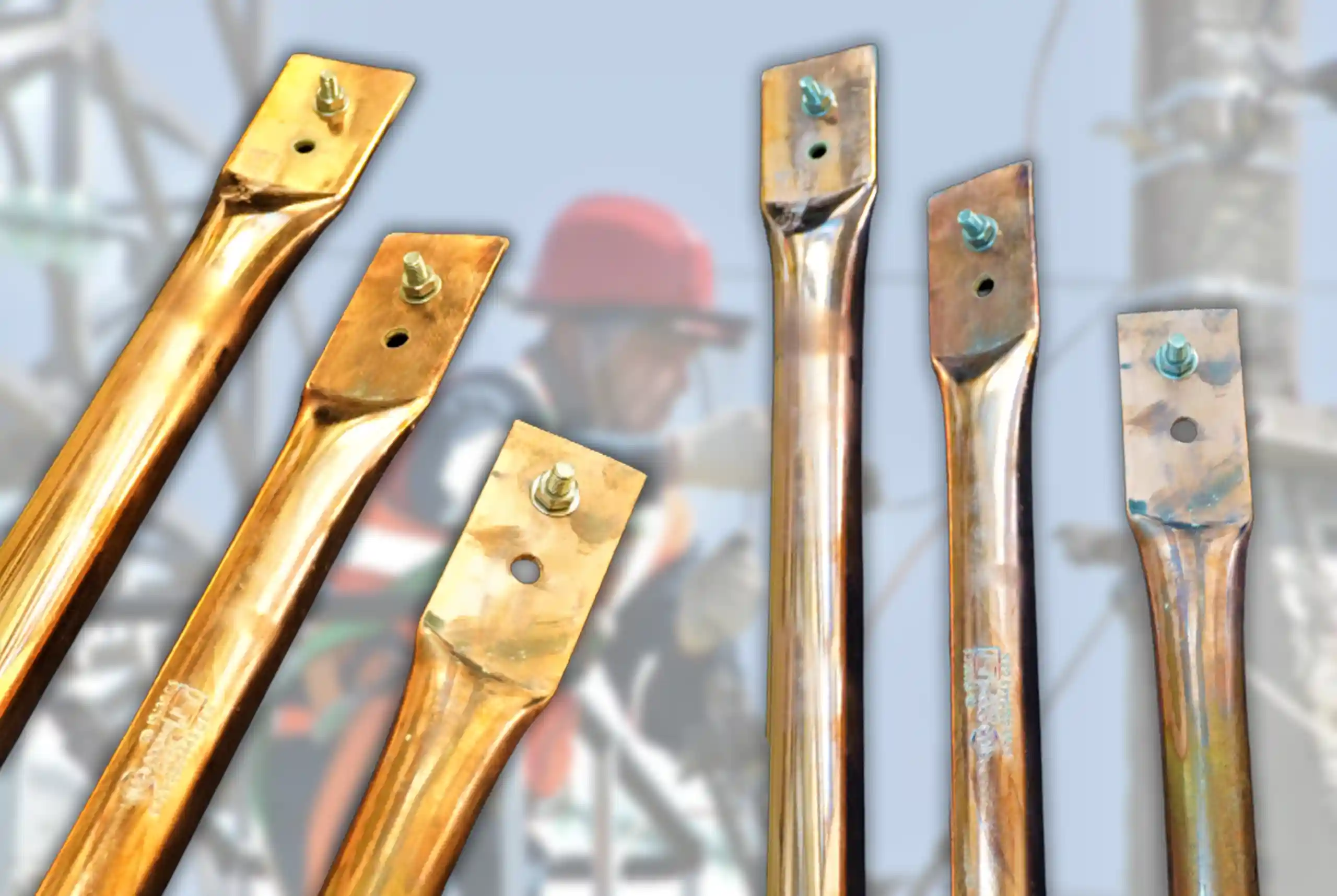HOME / COPPER BONDED EARTHING
What Is Copper Bonded Earth Rod?
Copper Bonded earthing connects various metallic components and electrical systems within a facility to establish a common grounding system. It ensures a low-resistance path for fault currents, reducing the risk of electrical shock and preventing interference. Bonded earthing is vital for electrical safety, equipment protection, and regulatory compliance in commercial, industrial, and residential settings. It provides stability, enhances performance, and safeguards against damage.
Types of Copper Bonded Earth Rod
- Copper -Bonded Earth Pits(Pipe Type)
- Copper -Bonded Earth Pits(Rod Type)
Features of Copper Bonded Earth Rod
Safety and Protection :
Bonded earthing systems provide a reliable path for fault currents, preventing the buildup of dangerous voltages and reducing the risk of electric shock hazards.
Electrical Continuity :
Bonded earthing ensures electrical continuity by connecting various metallic components, creating a unified ground reference point, and minimizing the potential for voltage differentials.
Lightning Protection :
Properly designed and installed bonded earthing systems help dissipate lightning currents, safeguarding structures, equipment, and occupants from potential damage caused by lightning strikes.
Corrosion Resistance :
Bonded earthing systems often utilize corrosion-resistant materials such as copper or aluminum to ensure long-term performance and durability.
Uses of Copper Bonded Earthing
Residential Applications :
The implementation of bonded earthing is crucial in residential buildings to prioritize safety, protect electrical equipment, and establish proper grounding for various electrical systems.
Commercial and Industrial Applications :
In commercial and industrial settings, the application of bonded earthing is extensively employed to uphold electrical safety, safeguard sensitive equipment, and adhere to regulatory standards.
Telecommunication and Data Centers :
Bonded earthing holds immense significance in telecommunication and data center facilities, as it plays a vital role in establishing and maintaining proper grounding for electrical systems.
Frequently Asked Questions
What is the purpose of bonded earthing?
The purpose of bonded earthing is to provide a low-resistance path for fault currents, ensure electrical continuity, protect against electric shock hazards, and mitigate the potential damage caused by lightning strikes.
How is bonded earthing installed?
Bonded earthing is installed by connecting various conductors, metallic components, or structural elements together using appropriate bonding techniques and materials.
What is the difference between bonded earthing and other types of earthing systems?
Bonded earthing
Bonded earthing focuses on creating electrical continuity and connecting various metallic components within a system, while other types of earthing, such as plate or rod earthing, primarily involve creating a direct connection between electrical systems and the earth.
Is GI earthing suitable for both residential and industrial applications?
Yes, bonded earthing systems can contribute to lightning protection by providing low-resistance paths for lightning currents, ensuring their safe dissipation into the ground and protecting structures and equipment.
How often should bonded earthing be inspected or maintained?
It is recommended to conduct periodic inspections and maintenance of bonded earthing systems to ensure their continued effectiveness. The frequency of maintenance can vary depending on factors such as the environment, system complexity, and local regulations.
HI TECH EARTHINGS
Electrical Ground Earthing Solutions
34, SS Mill Road, Kattoor, Coimbatore – 641009, Tamilnadu, India




